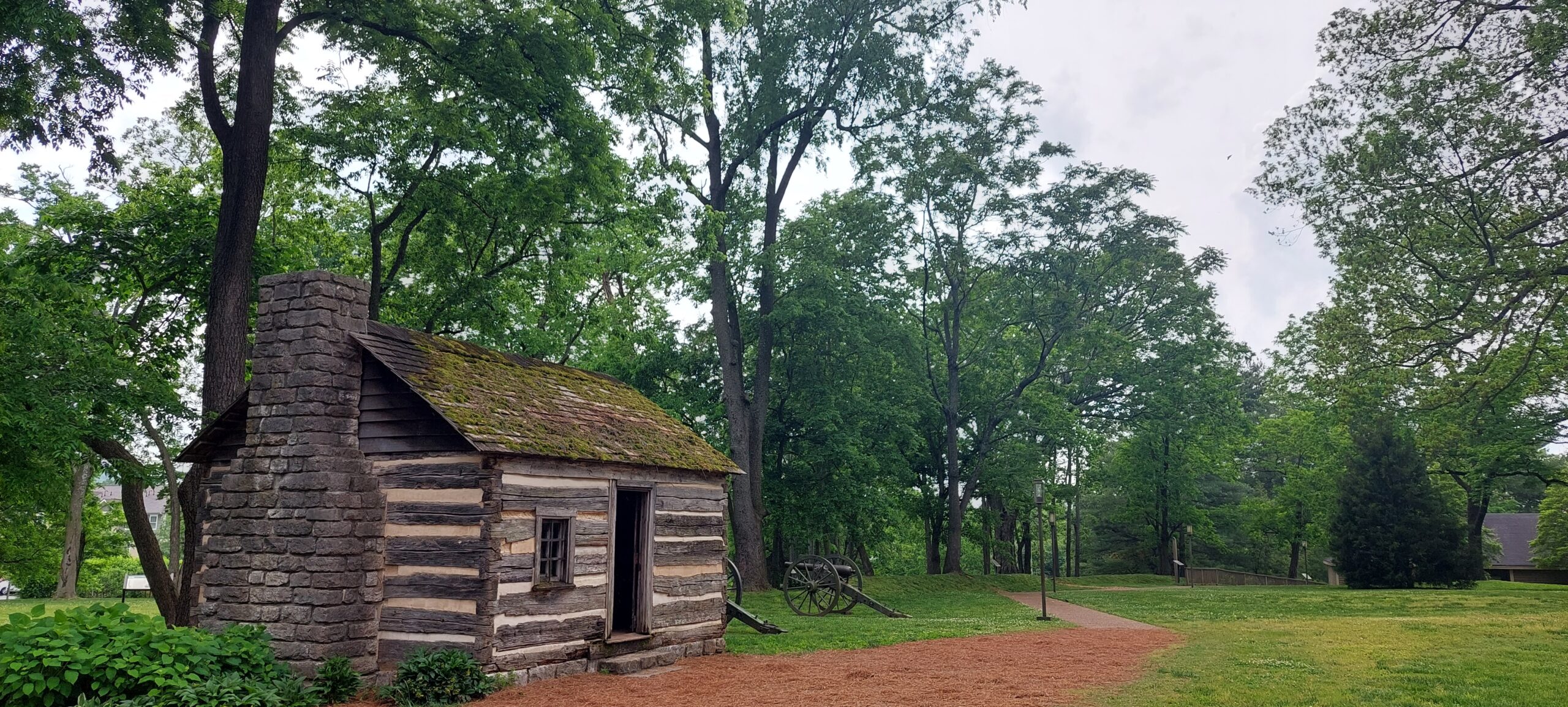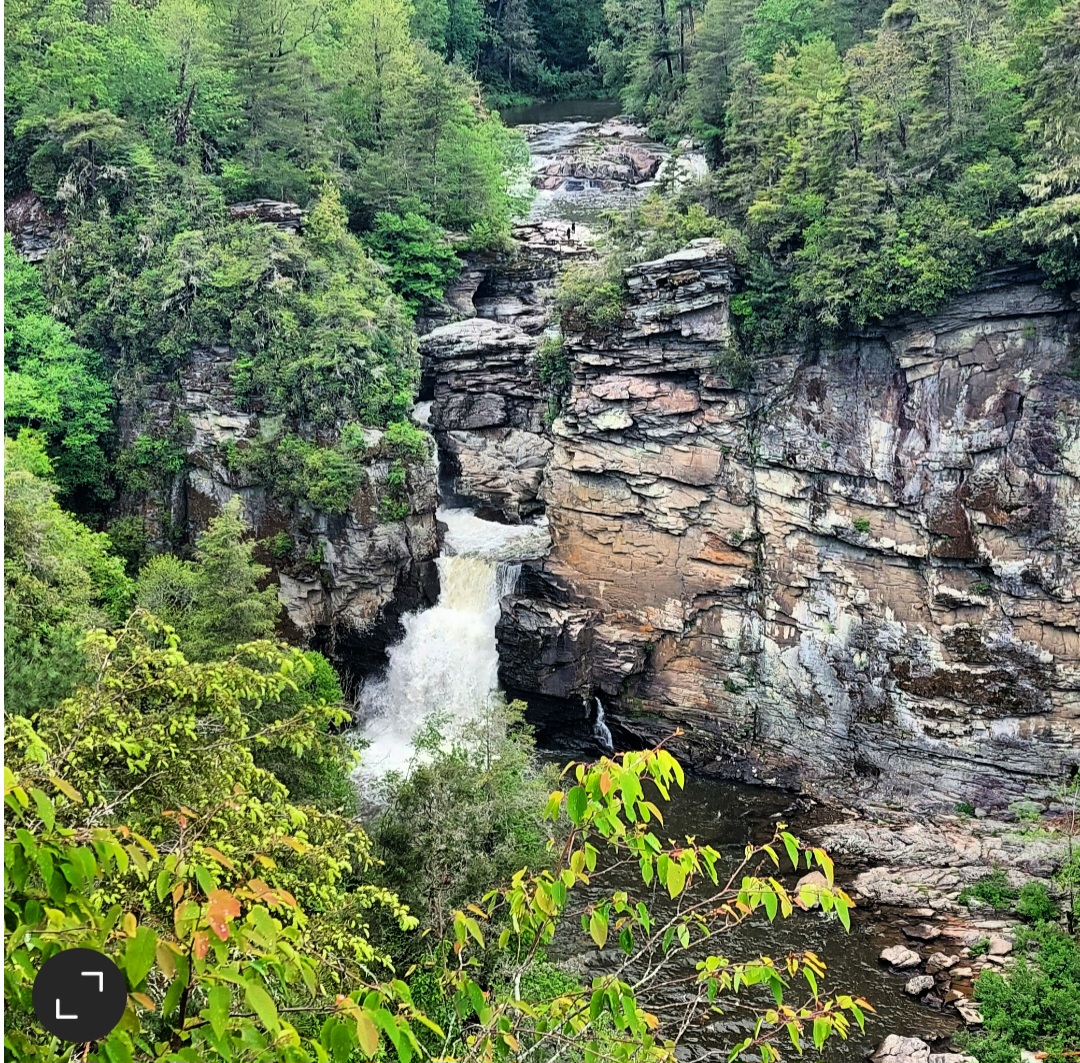The route east out of Texas leads us through a whole load of states: Arkansas, Louisiana, Mississippi, Alabama, Tennessee and finally to the North Carolina coast. On the way we investigate Bonnie and Clyde, we test some great American Parkways, we see a Titanic attraction, and we have a tech snag with Cuthbert…

Bonnie & Clyde Land
First stop, just over the Texas border is a lovely spot on an Arkansas bayou. Beautiful, peaceful, lots of birds, wildlife and best of all… free to camp! What’s not to like, eh? We stayed a few days going for walks around the nature and ignoring the occasional blasts of gunfire from the nearby firing range. What can we say… it’s just what they do in these parts. Then we scooted south into Louisiana.

What we hadn’t realised is that north-west Louisiana was ‘Bonnie and Clyde land’, or at least, ‘the end of their days land’. In Gibsland we saw a small museum commemorating their demise. It sits now on the site of the café where B&C bought their last sandwich before being shot-up 7 miles down the road by cops lying in wait for them. Seems like Bonnie might have died hungry, as she was apparently found with that last sandwich still in her hand!
Pushing east cross-country through Louisiana, we took the forest back-roads and tried to stay off the tar. Eventually, we crossed the Mighty Mississippi at Natchez to join one of the Great American Parkways.
Parkways of America
‘Parkways’ are a thing in North America: routes for leisure/tourism, usually managed by the National Parks, crossing areas of great natural beauty which are protected for conservation and/or history. Many Americans think these are tiny little country roads (and by their standards, they are!) but to Europeans they’re just average, go-anywhere, ‘normal sized’ roads 😊. The Parkways are an attempt to recreate the US country lanes of the past, with low speed-limits, no commercial traffic, no ‘Stop’ signs or traffic lights. There are only a few entry and exit points to the Parkways. In most places where they cross another road, they bridge over the other route, thereby limiting use by local traffic. They’re a lovely idea and something we haven’t encountered outside of USA/Canada.
Back in Canada we did (several times) the gob-smackingly scenic Icefield Parkway between Jasper and Banff National Parks, which set the ‘Parkway bar’ extremely high. Let’s see how the US parkways compare… we’re heading to the Natchez Trace, the Foothills, and the Blue Ridge Parkways.
The Natchez Trace
The Natchez Trace Parkway starts in south-west Mississippi at Natchez, and runs some 715km/444miles north-easterly across the state, then clips Alabama and into Tennessee up to Nashville. It was an easy-going drive and a great way to cover the distance whilst avoiding Interstates, traffic, junctions and the never-ending fast-food outlets that prevail around urban USA. We took our time and stopped to see some of the attractions along the way. But in terms of the ‘wow-factor’, it didn’t quite deliver against expectations.

Initially it was green. Very green. Lots and lots of green trees. Pretty… but no spectacular views. Actually… no views at all… just looong sections of densely tree-lined road. But as we continued north… guess what… yup… more trees and more green. Even at the ‘overlooks’ we saw very limited views of… you’ve guessed it… more green trees. Now… don’t misunderstand us… we have nothing against trees. We like trees. They do a great job. But over 700 km of dense tree forests does get a bit ‘Groundhog Day’ after a while. We can only guess that the greens turn to spectacular oranges in the autumn.
Hidden amongst said trees, there is some significant history to the Natchez Trace. It was originally a trading trail for the peoples indigenous to the area. There are some ancient ceremonial mounds, forming sacred sites for today. And there are a few historic sites from the Civil War era, which make the route worth protecting. However, the tangible evidence of this history to inspire the passing overlander is quite limited and there are certainly far more inspiring places in USA to learn about these things.
We did find a few of the stops on or near the Parkway to be interesting and worth a stop: the Rodney ‘Ghost Town’, the Windsor Ruins, Cypress Swamp, and Tupelo Elvis birth town (incidentally… now far more ‘Elvisy’ than it was when we first visited there over 20 years ago – it now includes a mock-up of Elvis’ first out-house toilet 🤣💩) were our favourite stops.
Scroll through – cool things along the Natchez Trace Parkway
Would we recommend the Natchez Trace? Well… hesitantly, we’d say ‘yes’. But only if you’re heading that way anyway. We’re chuffed that we had a chance to drive the whole length of one of the Great American Parkways, particularly as it was taking us where we wanted to be. Maybe it’s more spectacular in the autumn, but in May we didn’t see anything that we thought would be worthy of any major diversion to get there.
The Foothills Parkway
Coming off the Natchez Trace at Nashville, we took a long drive east across Tennessee to reach our next Parkway. The Foothills Parkway is near to, and managed by, the Great Smokey Mountains National Park (GSMNP). At only 33 miles/53km long, it’s far shorter than the Natchez Trace. But the terrain here is far more scenic; there are lots of view-points to stop and enjoy short hikes and great views. The teeny snagette here is the brand new charging system for enjoying the Parkway… it’s mad as a box of frogs! You can drive the Parkway for free, but you can’t just turn up and enjoy it all! Hold your excitement here for a couple of paragraphs… all will be revealed in the Great Smokey section below.
A Titanic Attraction

Between the end of the Foothills Parkway and the GSMNP, is the curiously named tourist-trap-town of Pigeon Forge. It’s home to Dollywood and a whole host of other family fun entertainment venues that aren’t really our ‘thing’. But we had heard great things about the Titanic attraction: a museum telling the tale of the legendary liner. The museum is housed in half-sized replica of the ship with some real artifacts from the original ship, and some detailed, real-size replicas of cabins etc. It really does a great job of telling the story of the ship, its engineering, its crew, its passengers, and the rendezvous with the iceberg. Spoiler Alert… it sinks in the end. That, for us, was the only thing to do in Pigeon Forge. Then we were excited to progress on to the GSMNP!

Great Smokey Parking
The GSMNP is rightly one of the most popular National Parks in the US. People flock here in their droves to enjoy the beautiful scenery, wonderful nature, wildlife and history.
The GSMNP is not, like most other National Parks, part of the ‘America the Beautiful’ pass system. It’s free to enter. Good, huh? Well ‘yes’… but ‘no’. A new system lets you into the Park for free, but charges a daily $5 permit to park your vehicle. The aim is to combat overcrowding in the GSMNP’s very limited parking areas. $5 doesn’t sound too unreasonable for that purpose, but here’s the snagette: paying the $5 doesn’t guarantee you a parking space! You have to buy a permit at a visitor centre, then drive out miles to the trailhead wherever you want to hike, and hope there is a space left when you get there.
The small car parks were designed well before the advent of mass-motor-tourism and are woefully inadequate for the number of visitors now. Result… numerous disgruntled families driving around with their newly purchased passes looking for non-existent parking spaces!




No shortage of views and hikes around the Great Smokey Mountains National Park
Remember way back, two paragraphs ago, that problem at the Foothills Parkway? Well, that Parkway is administered by the GSMNP, so the same parking permit rule applies. However, if you arrive at the south end of the Parkway wanting to park-up to do a hike, the nearest place to buy a parking permit is in the main GSMNP visitor centre some 70km away! It’s a 140km round trip to buy a $5 parking permit, just to enjoy your day-hike. Bonkers😲!
Anyway… parking aside, the GSMNP really is beautiful. Even if you can’t be bothered with the parking palaver, it’s worth a drive through to enjoy the views from the roads.
Blue Ridge Parkway
The main southern exit of the GSMNP brings you out into North Carolina. Here endeth the crazy parking-permit rules and here begins another of America’s Great Parkways: the Blue Ridge Parkway (BRP). The National Park Service dubs it ‘America’s Favourite Drive‘. The BRP runs 469 miles/755km north-easterly, the whole length of the Blue Ridge Mountains through North Carolina and Virginia.
Views around the Blue Ridge Parkway
It didn’t take long on the BRP to notice a major difference against the Natchez-Trace: Views! Fabulous views! All along the BRP there’s a string of view-points and trailheads for short hikes to points of interest and even better views. The weather didn’t allow us to take full advantage of all the views. But we did a few hikes and between the clouds we caught glimpses of spectacularity (yes, that’s a made-up word). Turns out… spring is the rainy season here, shoulda come in autumn apparently. I guess we could have checked that. But hey-ho, we are where we are. Whenever you can get here, it’s still a beautiful drive and definitely worth a diversion.
Tech Snag
As we wandered north on the BRP, Cuthbert suffered a minor technical snag. First, a ‘loss of coolant’ warning. Then, steam coming out from under the bonnet.

Now… I’m no technical expert. But even I know that steam coming out of an engine isn’t a good sign. Marcus is a technical expert, but even he couldn’t see exactly where the leak was coming from. One by one he checked all the normal suspects: hoses, pipe clamps etc, but even after changing some hose clamps, each time it still blew again when it was put under a bit of pressure going up a hill. Hmmm…
A bit more sleuthing caused him to check the Y-piece of the hose connected above the EGR… Bingo! It had a hairline crack in it! He tried to seal it with some heat-resistant tape, but it blew again. Okay… time to get the ‘big guns’ out! In a final attempt to bodge the leak, he applied epoxy to seal it, then wrapped locking wire around the soft epoxy, then wrapped it with self- amalgamating tape, and then added a final wrap of fabric tape. That did the trick! Over 600km later and it hasn’t leaked again. Hopefully it will hold until the new Y piece arrives from Europe next week.
The Mountain-Beach Dilemma
Pushing north up the BRP generated a bit of a route quandary. On the one hand, we loved the beautiful BRP. On the other hand, we also wanted to enjoy a parallel route down at the Atlantic coast: the Outer Banks Scenic Byway’. First World Problem, we know. But such is the overlanding lifestyle 😉. We do love our beach time. We’d go so far as to say a bit of wild-beach-coastline is our ‘happy place’. So the compromise is: after the southern half of the BRMP up to Virginia, we diverted east down to the coast. Sorted 😊!
Stay tuned for tales of our life-on-the-ocean waves… well, okay… our 2.5 hour ferry out to the Outer Banks sandbank island of Ocracoke!











